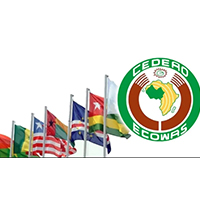As of August 16, it will be distributed progressively throughout the country.

. The Central Bank of the Argentine Republic (BCRA) today put into circulation the new 50 peso bill with the image of the condor, an emblematic bird of the Andean mountain range and neighboring mountain ranges of our country. Starting tomorrow, August 16, it will be distributed progressively through the entire network of bank branches. The new ticket will coexist with the others of the same value currently in circulation.
El Cóndor Andino is the fifth member of the new family of tickets Native animals of Argentina that the Central Bank puts into circulation, after the hornero ($ 1000) and the guanaco ($ 20) , launched in 2017, and the southern right whale ($ 200) and the yaguareté ($ 500) , legal tender since 2016. Overall, this new series emphasizes the great natural wealth of our country and the importance of preserving it, while at the same time implying a significant improvement and renewal of the money circulating in our country.
Like all the tickets of this new family, it has strict security measures, among which stand out the watermark - which reproduces the portrait of the condor and, in the lower part, the name “50” and the security thread, a band incorporated to the paper that contains the legend “$ 50” followed by “BCRA”, in a repeated and alternating form.
Likewise, the new ticket presents a complementary front-back motif: a partial footprint of the bird, located to the left of the watermark, which is completed by transparency with the reverse side. In the intaglio print you can see a portrait of the condor and the code for people with visual disabilities with a relief that is perceptible to the touch. Finally, the patterns printed in blue present yellow luminescence in ultraviolet light.
Its design follows the pattern of the new family of bills, with an obverse in vertical format, where the portrait of the condor is reproduced, and a reverse, in horizontal format, with the artistic recreation of its characteristic habitat. The colors black and gray predominate and it maintains the same size of the Weight Line, whose paper is of 95 g / m2 cotton. In addition, as a reference dedicated to children, in the lower left corner a condor calf is represented.
Within the framework of the Argentine Native Animals family , the new 50 peso bill with the image of the condor is a tribute to an emblem of the Andes Mountains that is in danger of extinction. The habitat of the condor in our country extends from south to north through this mountainous region and in the sierras of Córdoba and San Luis. It can grow up to a height of 142 cm and 330 cm in span, which makes it the largest bird on the planet. It feeds on the remains of dead animals, so it helps preserve the environmental balance within the ecosystem. The flight of the condor can reach great heights. Use the thermal currents to easily reach 7,000 meters above sea level and plan for hundreds of kilometers.
As usual, the official presentation of the ticket was made in the region from which the animal originated. In this case, the new 50 peso bill was launched today at an event held in the Divisadero Largo Natural Reserve, on the outskirts of the city of Mendoza. The presentation was headed by Francisco Gismondi, director of the BCRA, and Humberto Mingorance, Secretary of Environment and Territorial Planning of Mendoza, with the presence of other authorities of the BCRA and the provincial government together with representatives of NGOs dedicated to the preservation of the Andean Condor.
New family of tickets
The new series consists of six bills with the image of the hornero, the yaguareté, the southern right whale, the taruca, the Andean condor and the guanaco. The obverse of each ticket, refers to the figure of a typical animal of each region, while the reverse emphasizes its characteristic habitat. In this way, the new family of tickets represents a meeting point, putting our fauna at the center and strengthening our commitment to the environment.
The introduction of the new banknote family implies a major renewal of the currency, as well as a greater efficiency and reduction in printing costs. In addition, the BCRA develops this cash improvement plan in parallel with the development of new electronic payment methods, which imply a significant reduction in costs, increase security in transactions and promote greater financial inclusion.
Source: bcra.gob.a

